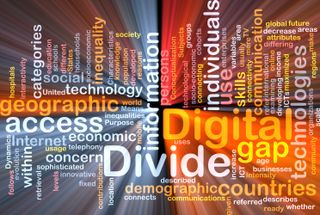AT&T pledges $2 billion to help bridge the digital divide
Telecoms giant is working with the Emergency Broadband Benefit program

AT&T will invest $2 billion over the next three years to help address the digital divide.
The initiative combines the company’s discounted broadband service offerings with community investment. It builds on the company’s $1 billion contributions over the last three years toward bringing broadband to underserved communities.
“We believe that broadband connectivity is essential for all Americans,” said CEO John Stankey. “Our broadband networks rose to the challenge of the pandemic in part due to policies that promoted private sector investment in multiple technologies and networks.”
The company also intends to expand affordable broadband through the federal government’s Emergency Broadband Benefit program. That program will expand broadband subsidies for low-income households during the COVID-19 pandemic.
Here are five elements of this AT&T initiative:
Education Offers: The company will continue to offer discounted wireless to more than 135,000 public and private K-12 schools, colleges, and universities.
Access from AT&T: This five-year-oldAT&T-funded program makes the internet more affordable for customers by providing qualifying households with wireline internet service at $10 or less per month. AT&T continues to waive data overages for these customers and is keeping the expanded eligibility to qualifying households and those participating in the National School Lunch Program and Head Start.
Get the ITPro. daily newsletter
Receive our latest news, industry updates, featured resources and more. Sign up today to receive our FREE report on AI cyber crime & security - newly updated for 2024.
Emergency Broadband Benefit: Eligible customers can temporarily reduce their monthly broadband costs by taking advantage of the federal Emergency Broadband Benefit. This FCC program will allow more than 30 million households to receive an additional subsidy of up to $50 a month for broadband internet service. This will push the broadband’s monthly cost to as low as $0.
To be eligible for the EBB, households must qualify for the Lifeline program. This initiative targets low-income households and provides small discounts on telephone and broadband services. To qualify for Lifeline, a household’s income must be at or below 135% of federal poverty guidelines or participate in other federal assistance programs, such as Medicaid.
Digital learning platform: AT&T is working with WarnerMedia to develop a digital learning platform to deliver high-quality educational content.
Learning centers: The company is launching 20 AT&T Connected Learning Centers in 2021. They’ll be in traditionally underserved neighborhoods where residents face barriers to connectivity. The company will provide high-speed internet and Wi-Fi and will ensure the centers have resources for devices like laptops and tablets. The centers will have access to WarnerMedia content and access to virtual learning tools from collaborators like Khan Academy.




